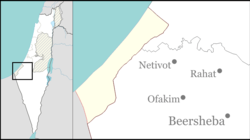
Gush Etzion is a cluster of Jewish settlements located in the Judaean Mountains, directly south of Jerusalem and Bethlehem in the West Bank. The core group includes four Jewish agricultural villages that were founded in 1940–1947 on property purchased in the 1920s and 1930s, and destroyed by the Arab Legion before the outbreak of the 1948 Arab–Israeli War, in the Kfar Etzion massacre. The area was left outside of Israel with the 1949 armistice lines. These settlements were rebuilt after the 1967 Six-Day War, along with new communities that have expanded the area of the Etzion Bloc. As of 2011, Gush Etzion consisted of 22 settlements with a population of 70,000.

Gush Katif was a bloc of 17 Israeli settlements in the southern Gaza strip. In August 2005, the Israeli army carried out the Cabinet's decision and forcibly removed the 8,600 residents of Gush Katif from their homes. Their communities were demolished as part of Israel's unilateral disengagement from the Gaza Strip.
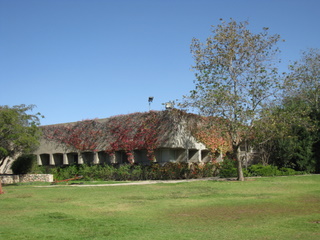
Kfar Etzion is an Israeli settlement orgabnized as a religious kibbutz located in the Judean Hills between Jerusalem and Hebron in the southern West Bank, established in 1927, depopulated in 1948 and re-established in 1967. It is located 4.7 km east of the Green Line and falls under the jurisdiction of Gush Etzion Regional Council. In 2019, Kfar Etzion had a population of 1,156.

Nirim is a kibbutz in the northwestern Negev in Israel. Located near the border with the Gaza Strip, about 7 kilometers east of Khan Yunis, it falls under the jurisdiction of Eshkol Regional Council. In 2019 it had a population of 360.

Hatzor, officially Hatzor Ashdod, is a kibbutz in southern Israel. Located near Ashdod, it falls under the jurisdiction of Be'er Tuvia Regional Council. In 2019 it had a population of 653.
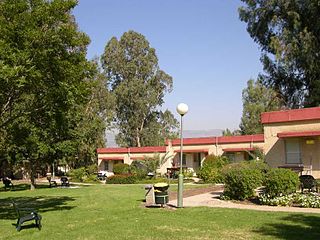
Kfar Szold is a kibbutz in northern Israel. Located in the Hula Valley in the Galilee Panhandle, it falls under the jurisdiction of Upper Galilee Regional Council. In 2019 it had a population of 674.
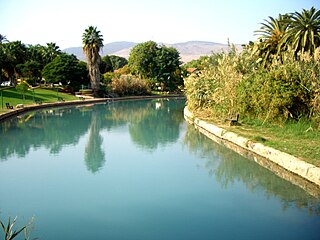
Nir David is a kibbutz in the Beit She'an Valley in northern Israel. Founded on 10 December 1936 as Tel Amal, the first of the tower and stockade settlements, it falls under the jurisdiction of Valley of Springs Regional Council. In 2019 it had a population of 729.
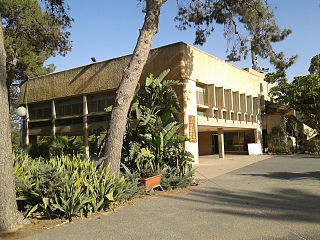
Urim is a kibbutz in the Negev desert in southern Israel. Located near the border of the Gaza Strip and about 30 kilometers west of Beersheba, the kibbutz falls under the jurisdiction of Eshkol Regional Council. In 2019 it had a population of 502.

A community settlement is a type of village in Israel and the West Bank. While in an ordinary town anyone may buy property, in a community settlement the village's residents are organized in a cooperative. They have the power to approve or veto a sale of a house or a business to any buyer. Residents of a community settlement may have a particular shared ideology, religious perspective, or desired lifestyle which they wish to perpetuate by accepting only like-minded individuals. For example, a family-oriented community settlement that wishes to avoid becoming a retirement community may choose to accept only young married couples as new residents.

Ruhama is a kibbutz in the Negev desert in southern Israel. The original settlement, established in 1911, is considered the first modern Jewish settlement in the Negev. Located around ten kilometres east of Sderot and surrounded by a nature reserve, it falls under the jurisdiction of the Sha'ar HaNegev Regional Council. In 2019 it had a population of 689.
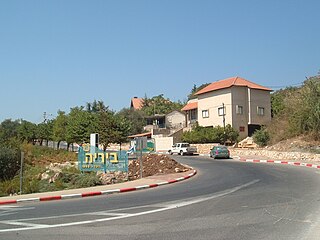
Birya is an agricultural village in northern Israel. Located in the Upper Galilee near Safed, it falls under the jurisdiction of the Merom HaGalil Regional Council. As of 2019 its population was 839.
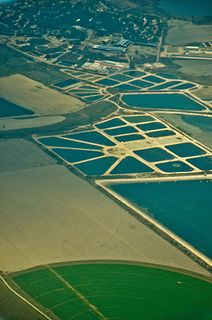
Kfar Ruppin is a kibbutz in the Beit She'an Valley, about 5 km (3.1 mi) southeast of Beit She'an in northern Israel. A member of the Kibbutz Movement, it falls under the jurisdiction of Valley of Springs Regional Council. In 2019 it had a population of 531.
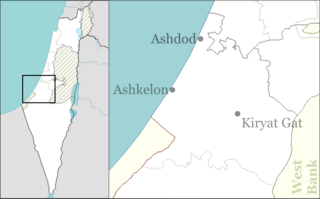
Ein Tzurim is a religious kibbutz in southern Israel. Located south of Kiryat Malakhi, it falls under the jurisdiction of Shafir Regional Council and is a member of the Religious Kibbutz Movement. In 2019 it had a population of 863.
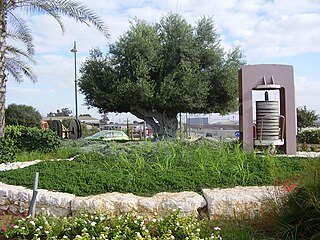
Bnei Darom is a religious moshav shitufi in central Israel. Located near the Mediterranean coast, it falls under the jurisdiction of Hevel Yavne Regional Council. In 2019 it had a population of 903.
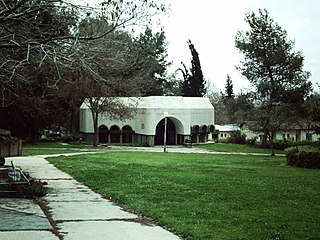
Bror Hayil is a kibbutz in southern Israel. Located near Sderot, it falls under the jurisdiction of Sha'ar HaNegev Regional Council. In 2019 it had a population of 954.

Ramat Ef'al is a neighborhood of Ramat Gan in central Israel. Previously part of Ef'al Regional Council, in 2007 it was transferred to the municipality of Ramat Gan together with Kfar Azar.

The Battle of Nirim, was a military engagement between the Egyptian army and the Jewish Haganah on May 15, 1948, the first day of the Egyptian invasion of Israel in the 1948 Arab–Israeli War. It was fought in kibbutz Nirim, founded just two years earlier as part of the 11 points in the Negev. The Egyptian 6th Battalion attacked about 40 Israeli defenders at dawn on May 15, backed by armored vehicles, mortars, cannons and aircraft. They failed to take the village and retreated about 7 hours later, leaving behind about 30–35 dead.
The Battles of Kfar Darom refer to a number of military engagements in 1947–1948 between the Jewish Haganah and various Arab forces in the 1948 Arab–Israeli War, in the southern kibbutz Kfar Darom. The most notable battles were fought on May 13–15, 1948, between the Palmach and the Egyptian army, including Muslim Brotherhood units. The kibbutz was defended by about 30 Israelis and held out against numerous attacks.

